

others
US Dollar steady on tariff jitters – Crypto News
- The DXY trades around the 103 zone on Monday, trying to extend Friday’s rebound amid volatile market conditions.
- A report suggesting Trump may pause tariffs briefly lifted sentiment, but a sharp White House denial reversed optimism.
- Resistance sits near 103.75, while 102.50 serves as key support amid mixed technical signals.
The US Dollar Index (DXY), which tracks the performance of the US Dollar (USD) against six major currencies, is trading near the 103 area on Monday after rebounding on Friday. Market volatility intensified as headlines emerged suggesting a temporary suspension of tariffs by the United States (US), though these were quickly refuted by the White House. While equities and commodities came under pressure, the DXY held onto modest gains. Technical signals remain mixed, with the MACD showing a buy but key moving averages flashing bearish signs.
- Markets initially rallied on reports that the US was considering a 90-day tariff pause for all nations except China, as revealed by National Economic Council (NEC) Director Kevin Hassett.
- The optimism was short-lived after a White House spokesperson dismissed the report as untrue, reigniting safe-haven flows and dragging stocks lower.
- US indexes reversed earlier gains; the Dow dropped over 1.5%, while the S&P 500 and Nasdaq also slipped into red territory by the afternoon.
- Attention is shifting toward Thursday’s Consumer Price Index (CPI) data for March, which could reflect the early effects of current trade policies.
- The White House has touted progress on curbing inflation, particularly in food and energy, but markets remain cautious ahead of the data release.
The US Dollar Index (DXY) attempts to build on Friday’s bounce, hovering near the top of its daily range. The Moving Average Convergence Divergence (MACD) signals a potential upside push, while the Relative Strength Index (RSI) at 42.80 remains neutral. Despite this, the 20-day, 100-day, and 200-day Simple Moving Averages (SMA), along with the 10-day Exponential Moving Average (EMA), continue to signal downside risk. Momentum indicators are split, with the 10-period Momentum suggesting a buy, but others like the Williams Percent Range indicating neutrality. Resistance levels are seen at 103.52, 103.72, and 103.75, while immediate support is located at 102.51. A rejection at the 103.18 zone last week reinforces that area as a pivotal point to watch.
Tariffs FAQs
Tariffs are customs duties levied on certain merchandise imports or a category of products. Tariffs are designed to help local producers and manufacturers be more competitive in the market by providing a price advantage over similar goods that can be imported. Tariffs are widely used as tools of protectionism, along with trade barriers and import quotas.
Although tariffs and taxes both generate government revenue to fund public goods and services, they have several distinctions. Tariffs are prepaid at the port of entry, while taxes are paid at the time of purchase. Taxes are imposed on individual taxpayers and businesses, while tariffs are paid by importers.
There are two schools of thought among economists regarding the usage of tariffs. While some argue that tariffs are necessary to protect domestic industries and address trade imbalances, others see them as a harmful tool that could potentially drive prices higher over the long term and lead to a damaging trade war by encouraging tit-for-tat tariffs.
During the run-up to the presidential election in November 2024, Donald Trump made it clear that he intends to use tariffs to support the US economy and American producers. In 2024, Mexico, China and Canada accounted for 42% of total US imports. In this period, Mexico stood out as the top exporter with $466.6 billion, according to the US Census Bureau. Hence, Trump wants to focus on these three nations when imposing tariffs. He also plans to use the revenue generated through tariffs to lower personal income taxes.
-

 Technology7 days ago
Technology7 days agoChatGPT users are mass cancelling OpenAI subscriptions after GPT-5 launch: Here’s why – Crypto News
-

 Technology5 days ago
Technology5 days agoiPhone 17 series tipped to cost more than iPhone 16: Here’s how much it could cost in India and US – Crypto News
-

 Cryptocurrency6 days ago
Cryptocurrency6 days agoXRP gains legal clarity in US after Ripple settles SEC case – Crypto News
-

 Technology1 week ago
Technology1 week agoOpenAI releases new reasoning-focused open-weight AI models optimised for laptops – Crypto News
-

 Blockchain1 week ago
Blockchain1 week agoCrypto Market Might Be Undervalued Amid SEC’s New Stance – Crypto News
-

 Metaverse1 week ago
Metaverse1 week agoChatGPT won’t help you break up anymore as OpenAI tweaks rules – Crypto News
-

 Technology7 days ago
Technology7 days agoHumanoid Robots Still Lack AI Technology, Unitree CEO Says – Crypto News
-

 Technology1 week ago
Technology1 week agoiPhone users alert! Truecaller to discontinue call recording feature for iOS from September 30. Here’s what you can do… – Crypto News
-

 Technology1 week ago
Technology1 week agoiPhone users alert! Truecaller to discontinue call recording feature for iOS from September 30. Here’s what you can do… – Crypto News
-
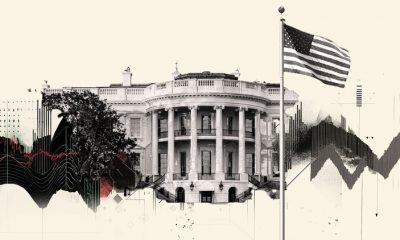
 others1 week ago
others1 week agoUS President Trump issues executive order imposing additional 25% tariff on India – Crypto News
-

 Blockchain1 week ago
Blockchain1 week agoShiba Inu’s Shibarium Is More Than A Layer 2, Expert Reveals What It Is – Crypto News
-
Business1 week ago
XRP Price Prediction As $214B SBI Holdings Files for XRP ETF- Analyst Sees Rally to $4 Ahead – Crypto News
-

 De-fi1 week ago
De-fi1 week agoRipple Expands Its Stablecoin Payments Infra with $200M Rail Acquisition – Crypto News
-

 Cryptocurrency7 days ago
Cryptocurrency7 days agoHarvard Reveals $116 Million Investment in BlackRock Bitcoin ETF – Crypto News
-
Cryptocurrency6 days ago
DWP Management Secures $200M in XRP Post SEC-Win – Crypto News
-
Business1 week ago
Analyst Predicts $4K Ethereum Rally as SEC Clarifies Liquid Staking Rules – Crypto News
-

 De-fi1 week ago
De-fi1 week agoSEC Says Some Stablecoins Can Be Treated as Cash, but Experts Warn of Innovation Risk – Crypto News
-

 De-fi1 week ago
De-fi1 week agoCoinbase Pushes for ZK-enabled AML Overhaul Just Months After Data Breach – Crypto News
-
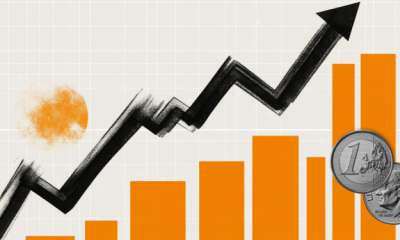
 others1 week ago
others1 week agoEUR firmer but off overnight highs – Scotiabank – Crypto News
-
others7 days ago
SEC Latest Filing Reveal Ripple Case Win Could Trigger XRP Treasury Boom Like Ethereum – Crypto News
-
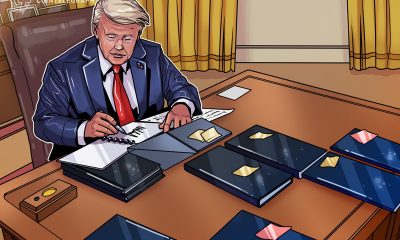
 Blockchain1 week ago
Blockchain1 week agoTrump to Sign an EO Over Ideological Debanking: Report – Crypto News
-

 others1 week ago
others1 week agoRipple To Gobble Up Payments Platform Rail for $200,000,000 To Support Transactions via XRP and RLUSD Stablecoin – Crypto News
-

 Technology1 week ago
Technology1 week agoHulu app to shut down in 2026 as Disney fully merges platform into Disney+ – Crypto News
-
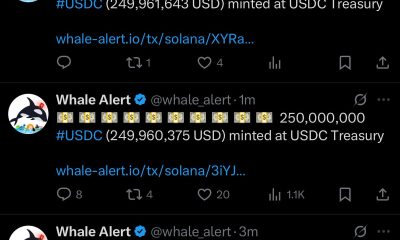
 De-fi6 days ago
De-fi6 days agoCircle Mints About $1 Billion in USDC After Flurry of Treasury Moves – Crypto News
-
Business5 days ago
Trump’s World Liberty Financial Targets $1.5B Crypto Vehicle Backed by WLFI Tokens – Crypto News
-
others5 days ago
United Kingdom CFTC GBP NC Net Positions fell from previous £-12K to £-33.3K – Crypto News
-
Technology1 week ago
SEC Clarifies Liquid Staking Isn’t a Security Amid Project Crypto Push – Crypto News
-

 Metaverse1 week ago
Metaverse1 week agoOpenAI launches gpt-oss-120b and 20b models that can work without the Cloud on your computers – Crypto News
-

 De-fi1 week ago
De-fi1 week agoSEC Says Some Stablecoins Can Be Treated as Cash, but Experts Warn of Innovation Risk – Crypto News
-
Technology1 week ago
Shiba Inu Community Turns on Shytoshi Kusama, Says He’s “Unfit To Lead” Amid Elections – Crypto News
-
Business1 week ago
OpenAI Launches GPT-5 Amid Competition From Elon Musk’s Grok – Crypto News
-
Technology1 week ago
Breaking: XRP Lawsuit Ends as Ripple and SEC File Joint Dismissal – Crypto News
-

 Cryptocurrency1 week ago
Cryptocurrency1 week agoThis Ripple (XRP) Metric Flashes Critical Warning Sign – Crypto News
-

 Cryptocurrency6 days ago
Cryptocurrency6 days agoBTC hovers at $115K; ETF flows turn negative, short-term holder profitability drops – Crypto News
-
others6 days ago
Crypto Adviser Bo Hines Move to AI Role Sparks Concern Over White House Policy Shift – Crypto News
-
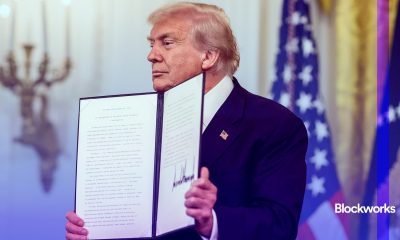
 Cryptocurrency5 days ago
Cryptocurrency5 days agoCrypto investors hopeful amid new regulatory orders – Crypto News
-
others3 days ago
Breaking: USDC Issuer Circle To Launch Arc Blockchain for Stablecoin Payments – Crypto News
-

 Blockchain1 week ago
Blockchain1 week agoSUI In A Sweet Spot: Structural Support And VWAP Align For Potential Breakout – Crypto News
-

 others1 week ago
others1 week agoScammer Steals $507,916 From US Benefits Program, Leaving Dozens of Families in Financial Ruin: DOJ – Crypto News
-

 Cryptocurrency1 week ago
Cryptocurrency1 week agoTop Crypto Coin Prediction: BTC, ETH And TRX Defy Odds – Crypto News
-

 De-fi1 week ago
De-fi1 week agoSEC Says Some Stablecoins Can Be Treated as Cash, but Experts Warn of Innovation Risk – Crypto News
-
Technology1 week ago
Roman Storm Trial: Jury Fails to Reach Verdict on Money Laundering Charge – Crypto News
-

 Technology1 week ago
Technology1 week ago‘The computer will see what we see’: Microsoft outlines bold AI shift in Windows 2030 vision – Crypto News
-
Cryptocurrency1 week ago
Ripple CTO Breaks Silence on Caitlin Long’s ‘XRP ICO’ Misconception – Crypto News
-
Technology1 week ago
Trump Tariffs: U.S. Imposes Another 25% Tariff on India – Crypto News
-

 Cryptocurrency1 week ago
Cryptocurrency1 week agoSEC staff statement on liquid staking may pave way for staking in spot Ether ETFs – Crypto News
-
others1 week ago
SEC Commissioner Pushes Back on Crypto ETFs as XRP ETF Approval Odds Sink – Crypto News
-
Business1 week ago
Former Meta, Netflix Engineers Unite to Build a Blockchain For iPhone Like Revolution in Web3 – Crypto News
-

 Blockchain1 week ago
Blockchain1 week agoXRP Whales Offload $1.9B Putting Price at Risk of Drop Toward $2 – Crypto News
-
others1 week ago
Just In: Trump to Sign Executive Order Allowing Crypto in 401(k) Plans – Crypto News

![CSX Corp. (CSX) Stocks Elliott Wave technical analysis [Video]](https://dripp.zone/news/wp-content/uploads/2025/02/CSX-Corp-CSX-Stocks-Elliott-Wave-technical-analysis-Video-400x240.png)
![CSX Corp. (CSX) Stocks Elliott Wave technical analysis [Video]](https://dripp.zone/news/wp-content/uploads/2025/02/CSX-Corp-CSX-Stocks-Elliott-Wave-technical-analysis-Video-80x80.png)





